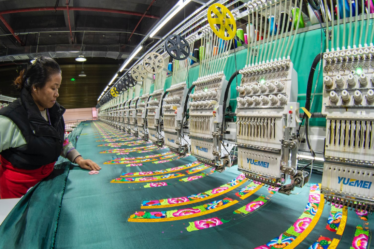
Roger Federer-backed footwear maker On Holding AG raised its full-year earnings forecast after seeing a boom in North America sales and reducing a dependence on air freight.
Net sales will probably reach 1.1 billion Swiss francs ($1.2 billion) in 2022, up from a previous target of 1.04 billion Swiss francs, the Zurich-based company said in a statement Tuesday. That’s slightly higher than the average analyst estimate.
The upstart sports shoe brand is looking to expand beyond its previous cult following and is looking to attract younger consumers. Founded in 2010, the company is known for the distinctive tubular cushions on the soles and the backing of Swiss tennis champion Federer, who became an investor in 2019.
Building on its Swiss roots, the company’s biggest market is North America, where second-quarter sales more than doubled from a year ago to 182 million Swiss francs. On also recorded an 18 percent growth rate in Europe and 52 percent in Asia-Pacific.
“The US is currently the growth engine,” Martin Hoffmann, co-chief executive officer and chief financial officer, said in an interview.
On’s shares are up about 2 percent since the company’s initial public offering in New York almost a year ago. That’s outperformed bigger rivals including Adidas AG, Puma SE and Nike Inc., whose shares are all down in the past year.
US Awareness
While the US stock listing has helped raise brand awareness in the country, On is also benefitting from higher sales at retail outlets like Foot Locker Inc. and Nordstrom Inc., Hoffmann said.
The company has raised prices in the US by about $10 on newly launched products, and plans to raise the cost of existing sneaker models in the coming spring. A similar strategy is envisaged for Europe, except for in Switzerland, he said.
“On is a premium brand, so we clearly see that we have pricing power in the market,” the co-CEO said.
While On has attracted plenty of interest from consumers looking to wear casual sneakers, it’s gained the most market share this year in the core brand of serious runners. That’s thanks, in part, to the new highly cushioned Cloud Monster and the more support-oriented Cloudrunner, Hoffmann said.
The company had been relying more on air freight to deal with the supply shortages that came about from pandemic-related factory closures in Asia last year. It expects to reduce that through the rest of this year, reserving the transportation method to ensure availability of its most recently launched products.
By Tim Loh
Learn more:
On Running Surges in Market Debut
The company raised $746.4 million in its IPO after its shares priced above their target, before climbing an additional 46 percent to end the day at $35.



